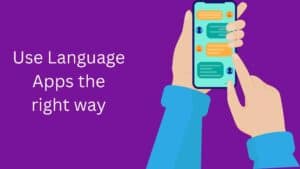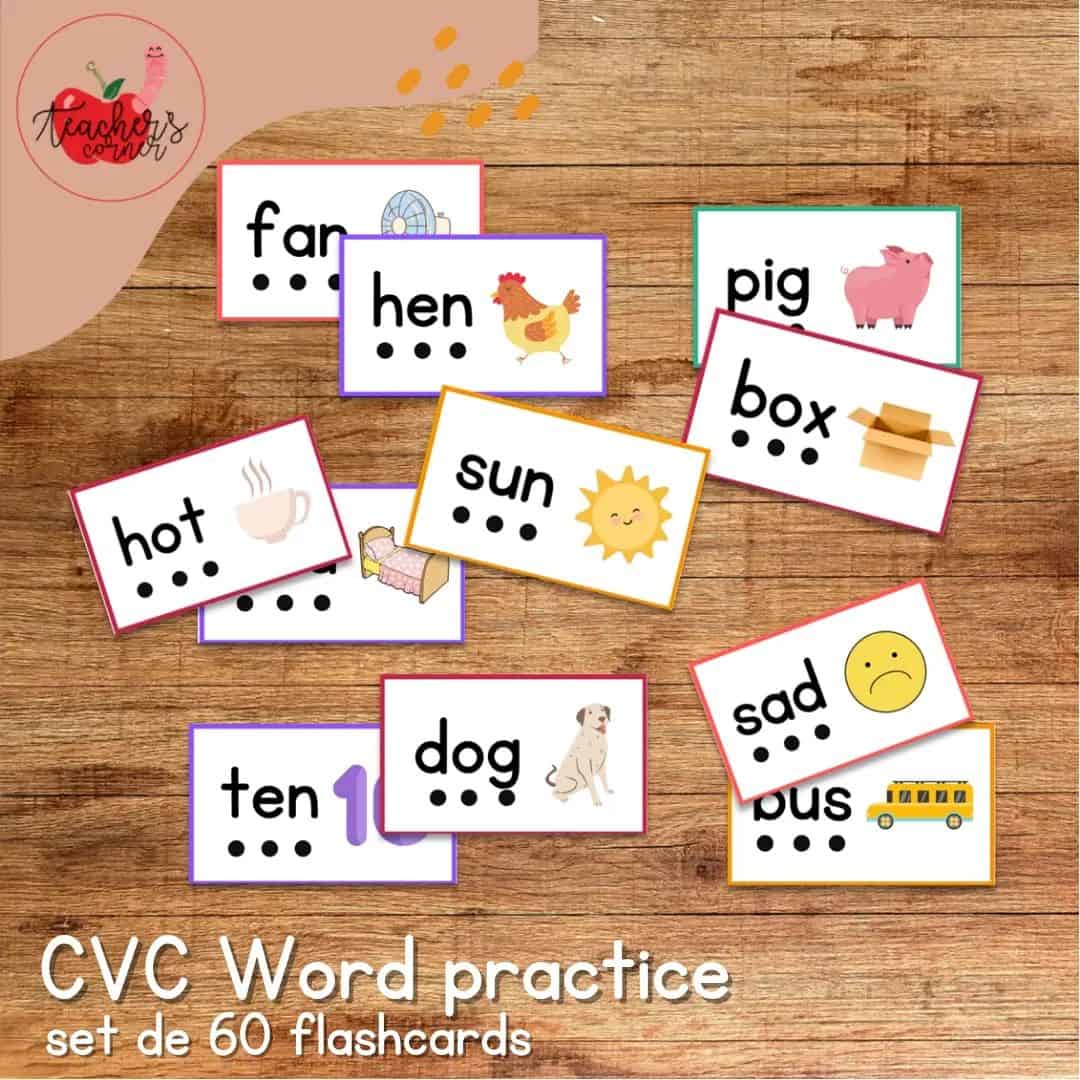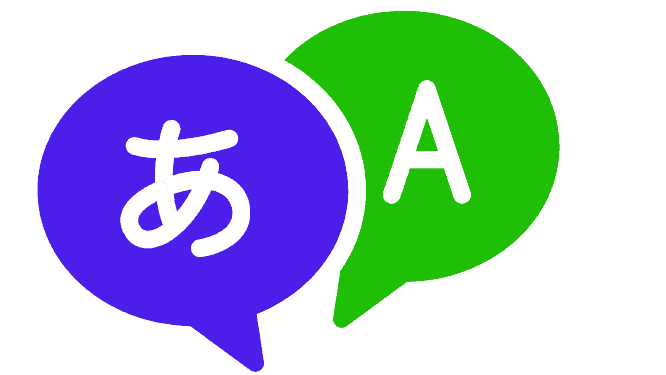With the emergence of language learning applications, learning a new language has never been easier. These apps provide users a simple and practical approach to pick up a new language while on the move and at their own speed. In this blog post, we will discuss how to use language learning apps effectively to accomplish your language learning goals.
We’ll go through advice on how to choose the best app, establish reasonable objectives, make use of a range of features, maintain consistency, and supplement with other materials. You’ll have the skills to maximize your language learning app and advance toward fluency at the conclusion of this article.

Tips to Start Using Language Learning Apps
1. Choose the right app
To make sure you choose the best language learning application for you, it’s vital to take into account a few aspects. Here are some pointers to assist you in selecting the best app:
- Think about how you learn: Different apps for learning a language have different features that fit different learning styles. If you prefer a more organized method, look for an app that has lesson plans or classes. Look for an app that includes games or conversation practice if you want a more engaged approach.
- Think about the language you want to learn. Not all apps that help you learn a language offer the same languages. Check that the app you choose has the language you would like to learn.
- Look for reviews and ratings – Before downloading an app, read user reviews and ratings to see if it is efficient and easy to use.
- Consider the cost: Some language learning applications are free, while others need a membership. Choose an app that is inside your pricing range after determining your budget.
Duolingo, Rosetta Stone, Babbel, and Memrise are a few of the well-known language-learning applications. To choose the app that is the perfect match for you, compare the features and reviews of each.
2. Set realistic goals
An important part of learning a language is setting objectives. It might be difficult to gauge progress and maintain motivation without defined objectives. Here are some reasons on why creating objectives is crucial:
- Provides motivation: When you set a goal, you have something to work towards, which can give you the motivation you need to keep learning.
- Measures progress – Setting goals allows you to track your progress and see how far you’ve come.
- Sets priorities for learning: When you set goals, you can set priorities for what you need to learn to reach those goals. This can help you learn faster and better.
Tips for setting smart goals
Start with a long-term target: Decide on your overall language learning goal before you do anything else. This could be to become conversational in a language or to achieve a certain level of proficiency.
Break it down into smaller goals: Once you’ve established your long-term objective, divide it into more achievable, shorter objectives. For instance, if your long-term objective is to speak French fluently, your shorter-term objectives may be to study the fundamental vocabulary, perfect your pronunciation, and work on your conversational abilities.
Make it clear – You should have clear, concise objectives. Aims like “improve my French” are too nebulous. Instead, make precise objectives like “learn 50 new French words this week”.
Make it quantifiable – It’s critical to be able to track your progress toward your objectives. Decide on measurable objectives, such as “practise French for 30 minutes every day this month.”
Make it realistic – Setting attainable objectives is just as essential as challenging yourself. Avoid establishing unreasonable or too challenging objectives since they might cause disappointment and dissatisfaction.
Make sure it’s relevant – Your objectives should relate to your overall language learning goals. For instance, if your long-term objective is to work in a French-speaking nation, you should concentrate on developing the specialized vocabulary and abilities required for your line of work.
Set a deadline: Give yourself a certain amount of time to reach your goals. This will assist you in staying on course and advancing toward your long-term goal. For example, “be able to hold a 10-minute conversation in French in 3 months”.
Examples of realistic language learning goals
Here are some examples of smart-compliant, realistic language learning objectives:
- Specific : I really want to be able to read French novels in their native tongue.
- Measurable: I’ll study one French article each week and keep a notebook to record my improvement.
- Achievable – Each day, I’ll pick up five new vocabulary words in French.
- Relevant – Since I want to study abroad in a Spanish-speaking nation, I want to learn Spanish.
- Time-bound: By the end of the year, I’ll be able to carry on a simple conversation in Japanese.
3. Use a variety of features
For the benefit of users in learning a new language, the majority of language learning applications contain a range of functions. Some of the most typical activities you could discover on a language learning app include the following:
Lessons
To get the most of lessons, start with the fundamentals before moving on to more complex subjects. Before going on to the next lesson, take your time with each one and make sure you grasp the ideas.
Exercises
Prioritize quality over quantity while working out. Take your time answering each question, and be sure you know why the right response is the one. Make the most of your errors to grow and learn.
Flashcards

For memorizing, flashcards can be a very useful tool. Utilize them to help you remember verb conjugations, vocabulary terms, and phrases. To help you comprehend more, utilize the new words and phrases you have learnt in context.
Games
Playing games may be a good method to improve your language abilities, but try not to focus too much on winning. Don’t be scared to make errors; instead, concentrate on learning and growing.
Conversation practice
Speaking in public might be scary, but it’s crucial to get as much experience as you can. Don’t worry too much about making errors and try to talk as much as you can. Prioritize comprehension and communication above perfection.
Progress tracking
Leverage the progress monitoring capabilities to keep track of your advancement and pinpoint your areas for growth. Make use of your advancement as inspiration to go on.
Audio and video material
Using audio and video content to sharpen your speaking and listening abilities is a terrific idea. To enhance your pronunciation, try to watch or listen to anything every day. Then, practice saying what you heard.
Keep in mind that consistency and frequent practice are the keys to utilizing each feature efficiently. Use the aspects that suit you the most, and don’t be afraid to experiment to keep things fresh.
The benefits of using a variety of features
Enhanced Learning Experience
A wide range of features can enhance the learning experience and make learning a new language more interesting and pleasurable. It may assist in breaking up the boredom of continuously doing the same tasks or lessons.
Improved Retention
By using different features, you activate different parts of the brain and link various linguistic abilities. By doing this, you may be able to recall the information more easily and keep it longer.
Learning that is specifically tailored to you
Since everyone learns differently, it is important to make use of a range of specific features. For instance, if you learn best visually, listening to audio information is more beneficial for you than performing written activities.
Comprehensive Learning
Learning a language requires a variety of abilities, including speaking, listening, reading, and writing. You may practice all of these abilities and get a deeper grasp of the language by using a number of features.
Better Motivation
Constantly doing the same workouts might become tedious and demotivating. Utilizing a range of features may keep you interested in and inspired to keep learning.
Overall, a number of features can make learning a language more efficient, entertaining, and suited to your requirements. You can get the most out of your language learning software and accomplish your objectives by playing with various features and discovering what works best for you.
4. Stay consistent
The secret to good learning a foreign language is consistency. Here’s why:
- Builds Habits: Regular language study contributes in the formation of positive habits. It becomes a habit that you don’t have to think about when you practice a little each day. Consistency helps make language learning a part of your daily life.
- Improves Retention: Language learning is all about repetition. Regular practice enhances retention by reinforcing what you’ve learnt. This indicates that you’re more likely to recall the vocabulary, idioms, and grammatical principles you’ve studied.
- Increases Motivation: Being consistent might help motivate people. Even a modest amount of improvement might spur you on to keep going. When you miss one or two days, it may be discouraging and difficult to get back on track.
- Develops Fluency: Fluency is developed by consistent practice, which is necessary for language acquisition. The muscle memory required to speak a language fluently is developed by regular practice. Additionally, it enhances your capacity for language-based thought and rapid conversational responses.
- Makes Learning Easier: Consistent language learning makes the process easier. Regular practice reduces the amount of time required to examine old material. This means you can focus on learning new material and improving your skills.
Strategies for building consistency into your language learning routine
Create a Goal: Having a clear objective inspires you to practice often. Having a goal helps you stay on track, whether it’s learning a certain number of new words each day, exercising your speaking skills for a specific length of time, or finishing a course each day.
Schedule Learning Time: Set aside a certain amount of time each day to learn the language. Make it a non-negotiable portion of your day and treat it like you would with any other appointment. This could help in incorporating language study into your daily routine.
Utilize Dead Time: Learn a language at any downtime during the day. This could occur when you’re driving, standing in line, or taking a lunch break. To improve your language skills during these times, use a mobile language study app.

Make Learning Fun: Making learning pleasurable is crucial since learning a language may be a laborious process. Use entertaining and interesting language learning tools, and look for methods to integrate language learning into activities you already like.
Practice with Others: Working on exercises with others may be enjoyable and inspiring. Join a language exchange program or look for a companion to practice your language skills with often. Additionally, it might help you be consistent and responsible.
Avoid Overdoing It: While consistency is crucial, avoid going overboard. Start out each day with a realistic amount of time, then gradually expand as you become used to it. Burning out by trying to do too much too soon can lead to inconsistency in the long run.
5. Supplement with additional resources
Apps for learning languages may be a fantastic resource, but they do have certain restrictions. For instance:
- Limited Vocabulary: Many language learning apps have a small vocabulary and may not include all the terms and expressions you need to be familiar with in order to speak successfully in everyday situations.
- Limited Grammar: In the same way, certain language-learning tools may not cover all the intricacies or rules of a language’s grammatical structure. This might make it difficult to utilize the language in more complicated contexts.
- Lack of Personalization: Since language learning applications are made to accommodate a variety of learners, they may not be suited to your particular learning requirements or preferences.
Recommendations for additional resources to supplement language learning
- Language Textbooks: When studying the grammar, vocabulary and culture of a language, language textbooks are an excellent resource. They are helpful for self-study and provide a more thorough overview of a language than a language learning application.
- Language lessons: Language lessons provide a more individualized learning environment and the chance to practice communicating with native speakers and other students. You have the option of taking lessons online or in a language school.
- Language exchange programs: By giving you the chance to talk with a natural speaker of the language you are studying, language exchange programs may help you develop your conversational abilities. Through websites or applications like HelloTalk, you can find language exchange partners.
- Programs that enable you to thoroughly immerse yourself in a language and culture are known as language immersion programs. They are a powerful tool for learning a language fast and efficiently. You may take part in local or international language immersion programs.
- Language podcasts: Listening to language podcasts may help you learn new words and phrases while also enhancing your listening comprehension. There are a variety of podcasts available for learning languages.
- Watching films and television programs in the language you’re studying may be a pleasant approach to develop your listening and comprehension abilities. To understand the conversation, you may use subtitles.
- Reading books written in the language you are studying may help you expand your vocabulary and increase your understanding. You can start with books that are appropriate for your level of ability and progress progressively to more difficult works.
You can boost your language learning experience and accomplish your objectives by utilizing these supplementary resources with language learning applications.
Conclusion
To sum up, although there are many other resources for learning a new language, language learning apps are a fantastic starting point. Making the most use of your language learning experience requires making the correct app selection, setting realistic objectives, using a range of features, maintaining consistency, and supplementing with other resources. You can improve your language abilities and reach your language learning objectives by following these recommendations and using extra resources.
FAQs
It is true that language learning applications can aid people learn new languages. However, they may be more or less beneficial for you depending on the app, your learning preferences, and your degree of dedication.
To consolidate your learning and advance in your language learning journey, you should use a language learning app often, preferably every day.
Yes, you can use multiple language learning apps at the same time. However, it is important to choose apps that complement each other and not overwhelm yourself with too many resources.
Language textbooks, courses, language exchange programs, language immersion programs, language podcasts, and language movies and TV shows are some other tools you could use to support your language learning.
To remain motivated when learning a new language, make precise objectives, measure your progress, mix and match materials, join a language learning group, and celebrate your triumphs.

Meet Bill, a French language teacher and blogger who specializes in testing various language learning apps. He has been teaching French for nearly 4 decades and holds a Bachelor’s degree from Manhattanville College. With a passion for technology and how it can enhance language learning, Bill has spent years testing and reviewing different language learning platforms. His blog provides valuable insights into the pros and cons of each app, as well as tips for language learners of all levels.
